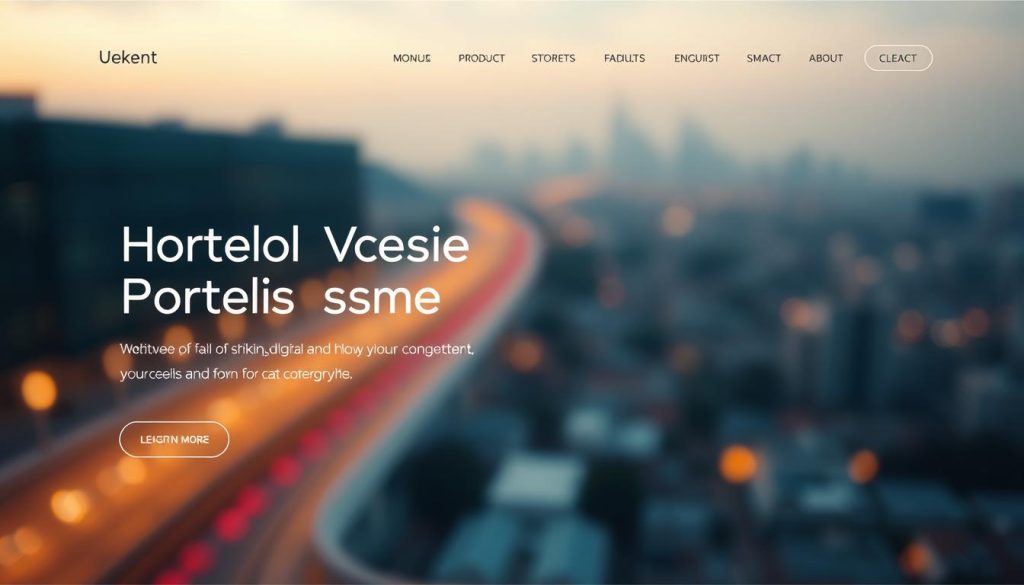In 2025 in France, more professionals pick their clients, set rates, and work from anywhere. This shift means concrete proof of skill matters more than ever.
Clients scan a website and portfolio before a first call. A tight personal site shows real projects and builds trust fast.
This friendly guide distills what people like Jane, Tom, and Rachel did to turn a job into a steady business. You’ll see clear steps to package work, find the right clients, and protect margins.
We cover practical moves: centralize best projects on your site, update pricing, pair SEO with personal branding, and use tools like Fueler to make your portfolio visible on the web.
Expect real examples, repeatable structures, and tips that save time and boost money earned. Whether you’re new to freelancing or refining your approach, this section sets a simple path forward.
Table of Contents
Key Takeaways
- Showcase measurable results on a website to win client trust.
- Keep a tight portfolio of best projects for faster decisions.
- Combine SEO and personal branding to attract quality leads.
- Use platforms like Fueler to make work visible on the web.
- Iterate pricing and offers to protect margins and save time.
Why Freelance Success Stories Matter for Your Career Growth
Clear case examples turn vague claims into tangible proof for people who evaluate work. Well-structured past projects reduce friction and help a client decide faster.
The power of proof: turning past work into client trust
Organize each sample by objectives, role, constraints, and measurable results. That format makes your process obvious and shows real impact.
Case studies, metrics, and testimonials beat generic promises. In health and science, showing clinical impact helped people overcome doubt and start conversations via LinkedIn and targeted email.
What the past teaches us about today’s opportunities
Patterns in past work become repeatable proof. When clients spot a clear way you solve problems, they forecast outcomes with more confidence.
- Well-structured stories convert hesitant people into confident buyers.
- Case study format (context → constraints → actions → results) speeds the « yes » decision.
- Fresh stories keep momentum and remind clients your approach works now.
- Consistent outreach (targeted email or LinkedIn) paired with proof assets raises reply rates.
| Element | What to include | Benefit for clients |
|---|---|---|
| Context | Industry, goals, timeline | Quick validation of fit |
| Constraints | Budget, compliance, scope | Sets realistic expectations |
| Actions | Role, tools, process steps | Makes your method transparent |
| Results | Metrics, testimonials, impact | Reduces due diligence time |
From First Project to Sustainable Business: What the Best Portfolios Do Differently
The best portfolios guide a visitor from problem to purchase in under a minute. Start with a short benefits-led intro on your homepage, then make each page earn its place.
Work samples that sell: objectives, role, constraints, measurable results
Write case studies using objective → role → constraints → results. Keep the outcome numeric and short so a client can judge fit fast.
Tie every case study to a clear service and CTA
Link each sample to one service and one call to action. Remove choices that force guesswork and shorten the decision path.
Iterate your portfolio as your skills and pricing evolve
Map a simple structure: benefits-first homepage, clear services menus, scannable projects, and a testimonials page. Use readable design, before/after visuals, and captions to show proof, not just pretty screens.
- Prioritize recent wins and update pricing to reflect market position.
- Add templated case study sections to save time when publishing new content.
- Align projects with target industry segments to help the right client self-qualify.
Freelance Success Stories
Showing process and results remains the best proof to win demanding clients.

Design and content wins: Jane’s premium clients
Jane rebuilt her web case studies to focus on process and metrics. That clarity converted casual visitors into premium clients in months.
From writer to agency owner: Tom
Tom standardized writing packages, hired a small team, and sold recurring offers. Revenue became predictable and scalable.
Scaling skills: Rachel
Rachel layered SEO, paid ads, and email on top of social work. That added scope and extended retainers for multi-year contracts.
Service to SaaS: Mark
Mark prototyped an inventory tool for a client, then launched it as a SaaS—turning one-off fees into recurring software revenue.
| Person | Move | Main outcome |
|---|---|---|
| Lily | Admin → Project management | Higher rates; packaged ops deliverable |
| Sean | Niche photography brand | Steadier inbound; easier marketing |
| Emily | Editing → Full production | Larger budgets; end-to-end control |
| Carlos | SEO specialist | Traffic gains tied to revenue |
“Showing process and results remains the best proof to win demanding clients.”
Result: These short cases show how clear offers, packaged services, and measured outcomes turn scattered work into lasting business.
International Inspiration: Big-Name Journeys That Started Small
Many well-known names began with a single blog, a prototype, or late-night hours studying markets. These short profiles show how a clear focus, steady work, and practical moves scale into larger impact.
Chiara Ferragni: blog to global brand and e‑commerce
Chiara turned The Blond Salad into a global brand and an e-commerce store. Her audience grew to about 16 million Instagram followers, proving how consistent content can compound into real money and recognition.
David Nuff: art, design, and web for urban impact
David built solar bike rental stations in 2008 and added tracking software later. His blend of art and web tools shows how project-led credibility opens doors with larger companies across an industry.
Hilary Umeoka: from priesthood to prolific writing and leadership
Hilary switched paths, wrote thousands of pieces, published a best-seller, and now leads a writing team. Her journey shows how scale in writing creates leverage—moving from single writer output to team-led production.
AbdulGaniy Shehu, Alex Chia, and Kelly Vaughn
AbdulGaniy built trust through punctual, high-quality delivery; clients returned because simple habits matter. Alex moved from a Starbucks job to trading, endured losses, then turned that expertise into teaching. Kelly left a government post for web development and now travels while working remotely.
“Start small, face constraints, and compound wins over years — that is the practical way others turn work into lasting partnerships.”
- Lessons: document wins, specialize when it helps, and reinvest time in compounding assets.
- These people show a lot can change in a year or across multiple years if you stay consistent.
Trust, Positioning, and Ideal Clients in Health and Science
Clinical evidence is the clearest way to turn professional doubt into client trust. In medical and science work, clear outcomes tied to patients or trials reduce perceived risk. That helps hospital teams and product leads justify budgets faster.
Jeremy Day‑Storms (PhD) beat impostor feelings by listing clinical contributions and exact metrics. That made conversations easier and shortened vetting time.
Overcoming impostor syndrome with clinical impact proof
Show outcomes: patient measures, trial endpoints, or process improvements. Keep statements specific and short.
Use before/after charts and third‑party quotes to make complex results easier to grasp.
Specialize to simplify your message and marketing
When Kathy Adamson narrowed her service to one service area, marketing became clearer. A tight niche trims the message, speeds decisions, and raises perceived expertise.
Margaret Johnson found four new clients in a tough year by staying focused and consistent.
Channels that work: LinkedIn, targeted email, consistent networking
Optimize LinkedIn: headline with outcome, pinned case studies, and regular posts that highlight method and results.
Run short, respectful email sequences: micro-case proof, a specific offer, and one gentle follow-up. Track replies and adjust timing.
- Keep a lightweight project log to turn completed projects into short case studies each quarter.
- Layer high‑end editing onto writing or add design charts to lift fees without changing core craft.
- Collect concise others’ testimonials to validate complex outcomes quickly.
| Problem | Simple fix | Immediate benefit |
|---|---|---|
| Impostor doubt | List clinical contributions and metrics | Faster trust from client teams |
| Mixed messaging | Choose one industry niche | Shorter sales cycles |
| No outreach process | LinkedIn checklist + micro email cadence | Higher reply and meeting rates |
“Clarity plus consistency wins clients even in tough years.”
Build a Website and Portfolio That Convert Visitors into Clients
A clear website turns casual visitors into qualified leads by showing outcomes fast.
Start with structure: a benefits-led homepage, focused service pages, a portfolio hub of case studies, and a testimonials page. This layout helps people spot fit in seconds and reduces back-and-forth.

Homepage benefits, service pages, case studies, and testimonials
Use the homepage to state the main outcome you deliver. Add a bold metric or one-line proof near the top.
Service pages should map to what clients actually buy. Each page needs a clear CTA: form, calendar, or audit.
SEO and content: intent-driven pages, pillars, and internal links
Create pillar pages for core services and industries you serve. Link case studies back to those pillars to lift organic relevance and time on site.
Repurpose short case snippets into email and page updates to keep content fresh each year.
Storytelling with data: visuals, metrics, logos, certifications, and CTAs
Show visuals and bold metrics up front. Add client logos (with permission) and certifications to ease larger client concerns.
Use testimonial pull-quotes that answer common objections and guide attention to a single next step.
“A concise site structure and clear proof make it easier for a client to say yes.”
- Core structure: benefits-first homepage, clear service pages, portfolio with scannable case studies, testimonials page.
- Portfolio: short case studies showing the work, numbers, and problem→result arc.
- Lead paths: short form, bookable calendar, and audit CTA to speed first contact.
| Page | What to include | Primary benefit |
|---|---|---|
| Homepage | Benefit-led headline, key metric, CTA | Fast qualification of visitors |
| Service page | Outcome descriptions, pricing cue, link to case studies | Matches search intent and shortens decision time |
| Portfolio hub | Scannable case studies, visuals, metrics, logos | Shows proof and builds trust |
| Testimonials | Pull-quotes, short client blurbs, certifications | Resolves objections for enterprise buyers |
Tip: Each year, prune weak work and highlight projects that match your present positioning to keep the website relevant and discoverable.
Pricing, Packaging, and Process: Turning Projects into Profits
How you package work often determines if a client signs once or buys again. Choose a billing model that matches project clarity and risk. For simple, predictable deliverables, pick a value-based package. For discovery, open-ended work, or high uncertainty, bill by the hour.
When to use each model:
- Value-based packages — predictable outcomes, clear deliverables, easy to sell and scale.
- Hourly — complex scopes, research-heavy phases, or initial audits where time is uncertain.
Standardize delivery to save time and lift margins
Document SOPs for recurring tasks. Templates and checklists cut errors and reduce delivery hours. Tom’s move to standardized processes enabled him to scale into a content agency with steadier revenue.
Add audits, reporting, and metrics
Offer audits and monthly reports as add-ons. These create recurring touchpoints, justify ongoing services, and show the value that supports price increases.
“Standardization and clear metrics turn one project into a longer business relationship.”
Monitor what matters: track closing rate and lifetime value (LTV) by offer and industry to see which service lines drive the healthiest business over the year.
| Decision | When to choose | Outcome |
|---|---|---|
| Value-based package | Clear outcome, repeatable delivery | Higher margins; easier upgrades |
| Hourly billing | Discovery, uncertain scope | Protects time; fair for open work |
| SOPs & templates | Repeatable tasks and client onboarding | Faster delivery; fewer errors |
| Audits & reporting | Clients needing proof and recurring touchpoints | Recurring revenue; clearer time-to-value |
Protect your hours with clear boundaries. Let an agency rep handle tough negotiations if pricing talks sap time or confidence. Offer tiered packages with clean upgrade paths so a single project can become a long-term client relationship.
Localizing Your Freelance Strategy for France
Local language, local rules, and local proof make a big difference when selling services in France.
Map demand first: web development, SEO, professional writing, design, and editing are sought after by PME, ETI, startups, and health providers.
Build trust quickly: adopt RGPD-compliant forms, clear French contracts, and native-level copy that reflects sector nuances.
Acquisition mix that works
- Optimize LinkedIn and targeted email sequences for French buyers.
- Leverage warm referrals, pro networks, and local events.
- Bid selective RFPs where your portfolio matches the industry need.
Quick wins and local proof
Publish French case studies and testimonials. Offer short SEO audits, writing samples, or mini-branding packs that convert in weeks or months.
| Target buyer | Typical need | Quick offer |
|---|---|---|
| PME | Website refresh, clearer copy | Mini-branding + one-page audit |
| Health | Compliance, trusted messaging | RGPD check + sample case study |
| Startups | Growth, SEO, product copy | Short SEO audit + landing copy |
Tip: Keep a compact French portfolio and tiered pricing so each client can choose by outcome, not hours.
For a practical guide on positioning and fees in France, see this resource for local ideas and timelines.
Conclusion
End with a few small, measurable actions that move your portfolio from passive to productive.
Audit your best work, publish two tight case studies with objectives, process, deliverables, and clear metrics, then reach a short list of clients each week.
Protect your time. Standardize one service, add audits and reporting, and track replies, meetings, and signed deals so the business shows what converts.
Quarterly reviews keep pricing and positioning aligned with French demand—update French case studies, RGPD notices, and contracts as needed.
Simple plan: one-page roadmap, a 30-minute weekly outreach block, and one booked meeting each month. Small experiments will show which ideas grow—scale the winners and drop the others.
FAQ
What makes a portfolio stand out when pitching clients?
Focus on clear work samples that show your objective, role, constraints, and measurable results. Highlight the service you provided and include a concise call to action so prospects know the next step. Use visuals, metrics, and client logos where allowed to build trust quickly.
How can I turn one-off projects into recurring revenue?
Package services into retainer or subscription options, add audits and reporting, and document repeatable processes. Offer tiered value-based packages that solve ongoing problems—this makes it easier for clients to justify longer commitments and higher lifetime value.
What should I include on my website to convert visitors into clients?
Make the homepage benefit-driven, include clear service pages, showcase case studies with outcomes, and add testimonials. Support pages with SEO-friendly content, internal links, and prominent CTAs. Fast load times and mobile-friendly design help conversions too.
Which channels work best for finding higher-paying clients in health and science?
LinkedIn and targeted email outreach perform well, along with consistent professional networking and conference attendance. Demonstrate clinical impact with case studies, certifications, and published work to overcome impostor feelings and establish credibility.
How often should I update my portfolio as my skills evolve?
Review and refresh your portfolio every few months or after major wins. Replace older pieces with recent projects that reflect current pricing and services. Iterating keeps your positioning aligned with the clients you want to attract.
What are practical steps to localize services for a market like France?
Map high-demand sectors like web, SEO, writing, and design. Ensure RGPD compliance, craft strong French copy, and prepare clear contracts. Use LinkedIn, referrals, local events, and targeted RFPs, and publish French case studies and quick-win offers such as SEO audits or mini-branding packages.
How do I price value-based packages versus hourly work?
Start by estimating the client’s business result and price based on impact rather than time. Use hourly billing for undefined work or scope flexibility. Combine both with clear scopes, SOPs, and KPIs so clients see the return on investment.
Can individual creators scale into productized services or SaaS?
Yes—identify repetitive tasks you can standardize, then create a productized service or minimum-viable tool. Marketers and designers often move from bespoke work to templated solutions or lightweight SaaS to increase margins and reach.
What evidence helps build trust quickly with prospective clients?
Show measurable results (traffic, conversions, revenue lifts), client testimonials, certifications, and case studies that state objectives and outcomes. Clear processes, guarantees, and transparent pricing also reduce friction.
How do I pivot from a service role to running a small agency?
Standardize your offerings, document SOPs, hire contractors for delivery gaps, and formalize sales and onboarding processes. Focus on repeatable offers and recurring revenue to stabilize cash flow while you expand team capacity.
Which elements of storytelling are most persuasive in case studies?
Lead with the client’s goal, outline the constraints and your strategy, then present concrete metrics and visuals. End with the client benefit and a clear CTA so readers can imagine similar gains for their business.
How can I demonstrate market authority in SEO and content work?
Publish intent-driven pages, pillar content, and internal links that rank. Share before-and-after analytics showing traffic and keyword gains, include client logos, and maintain a consistent publishing schedule to prove expertise over time.
What quick offers convert well for new prospects?
Low-cost, high-value audits—like an SEO audit, a short writing sample, or a mini-branding review—work well. They showcase competence, deliver immediate value, and make it easier to upsell fuller packages.
How do I handle scope creep without damaging client relationships?
Use clear contracts and a documented change request process. Offer a defined number of revisions and communicate the impact of additional requests on timeline and cost. Being transparent preserves trust and keeps projects profitable.
What role do certifications and formal credentials play in pricing and positioning?
Credentials help in specialized fields like health, science, and technical SEO by reducing perceived risk. Use them on service pages and case studies to justify higher pricing and to attract clients who value formal proof of competence.





